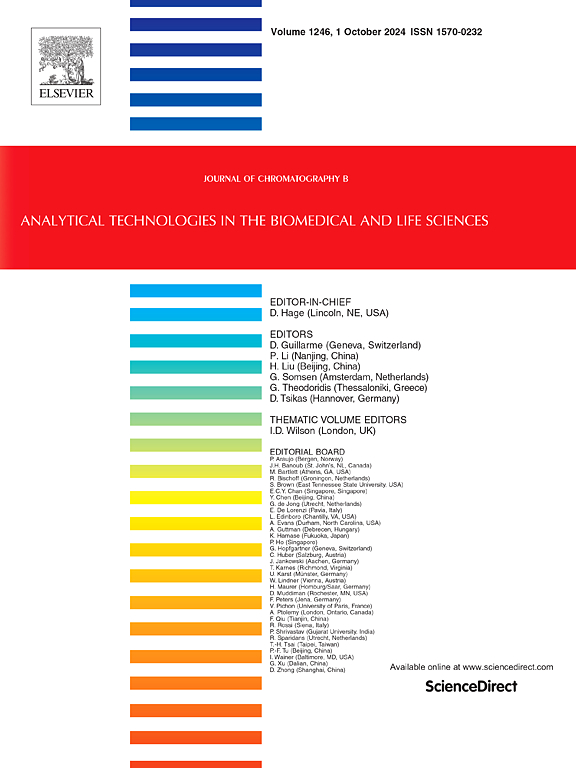Evaluation of ion source parameters and liquid chromatography methods for plasma untargeted metabolomics using orbitrap mass spectrometer
IF 2.8
3区 医学
Q2 BIOCHEMICAL RESEARCH METHODS
引用次数: 0
Abstract
Although untargeted metabolomics holds promise for study of metabolites in human health and disease, robust method development and optimization are needed to reduce potential analytical biases and to ensure comprehensive, high-throughput results. In this study, the effect of mass spectrometer (MS) ion source parameters on the signal reproducibility and number of metabolite annotations during untargeted metabolomics is shown. Furthermore, different mobile phase gradients and columns (five reversed phase (RP)-C18 and two hydrophilic interaction liquid chromatography (HILIC) columns) were evaluated for untargeted metabolomics of blood plasma extracts. Positioning the electrospray needle at the farthest on the Z-direction and the closest tested position on the Y-direction with respect to the mass spectrometry inlet produced the best signal reproducibility and the greatest number of metabolite annotations. Moreover, optimal ion source conditions included a positive spray voltage between 2.5 and 3.5 kV, a negative spray voltage between 2.5 and 3.0 kV, vaporization and ion transfer tube (ITT) temperature between 250 and 350 °C, 30 to 50 arbitrary units of sheath gas, and at least 10 auxiliary gas units. Despite the differences in chromatographic characteristics, the different RP columns assessed showed comparable performance in terms of number of metabolites annotated. For HILIC columns, a zwitterionic column demonstrated better performance than an amide column. Finally, as compared with use of a RP column alone, use of both the optimal RP and HILIC approaches expanded metabolome coverage: the number of metabolites annotated increased by 60 %. This study highlights the significance of fine-tuning the MS ion source parameters and optimizing chromatographic conditions on metabolome coverage during untargeted metabolomics of plasma samples.

求助全文
约1分钟内获得全文
求助全文
来源期刊

Journal of Chromatography B
医学-分析化学
CiteScore
5.60
自引率
3.30%
发文量
306
审稿时长
44 days
期刊介绍:
The Journal of Chromatography B publishes papers on developments in separation science relevant to biology and biomedical research including both fundamental advances and applications. Analytical techniques which may be considered include the various facets of chromatography, electrophoresis and related methods, affinity and immunoaffinity-based methodologies, hyphenated and other multi-dimensional techniques, and microanalytical approaches. The journal also considers articles reporting developments in sample preparation, detection techniques including mass spectrometry, and data handling and analysis.
Developments related to preparative separations for the isolation and purification of components of biological systems may be published, including chromatographic and electrophoretic methods, affinity separations, field flow fractionation and other preparative approaches.
Applications to the analysis of biological systems and samples will be considered when the analytical science contains a significant element of novelty, e.g. a new approach to the separation of a compound, novel combination of analytical techniques, or significantly improved analytical performance.
 求助内容:
求助内容: 应助结果提醒方式:
应助结果提醒方式:


